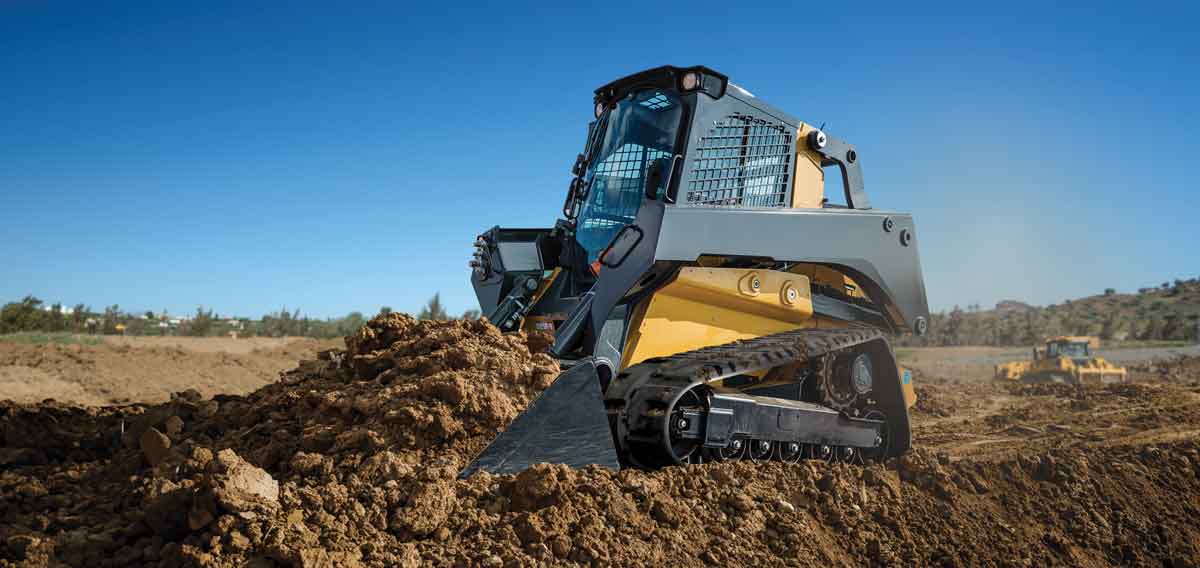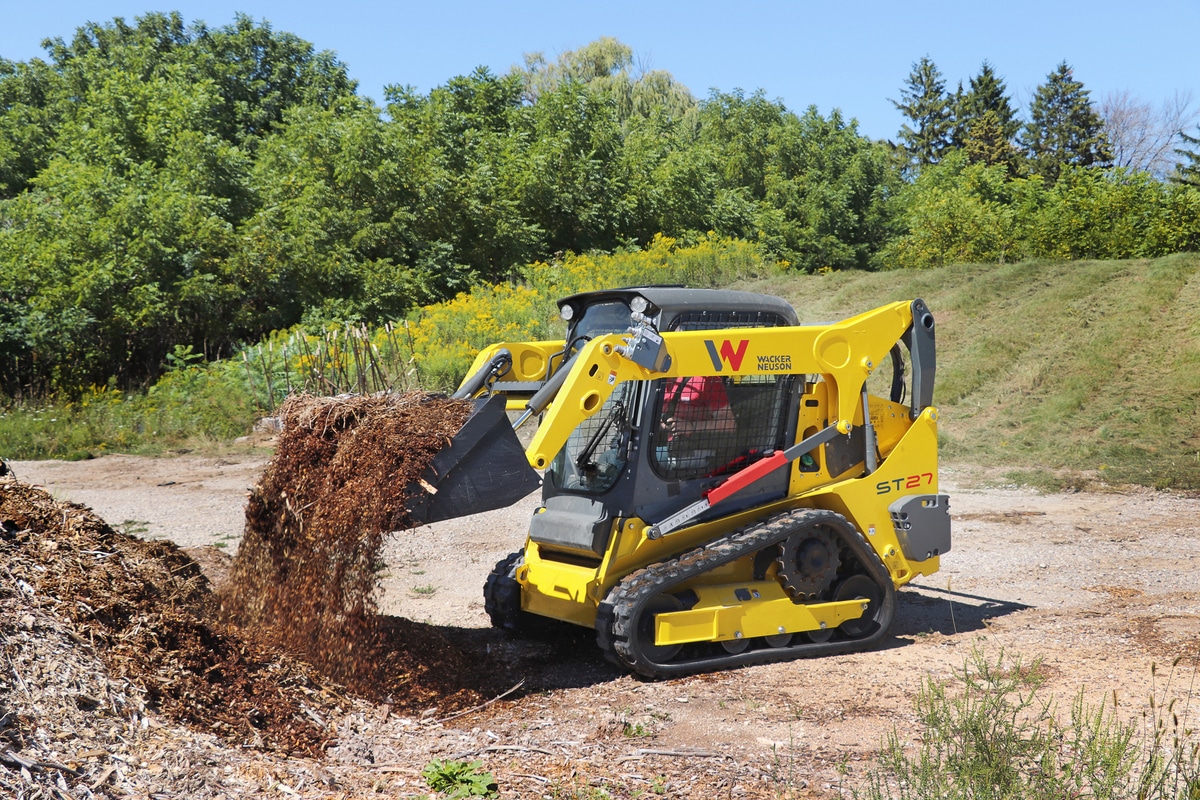Terex Track Loaders — 2015 Spec Guide
One of the Oldest Manufacturers in the Track Loader Market
Terex compact track loaders have a long history in the construction market, dating back to 1983 when Gary Lemke, a top snowmobile dealer in the United States, and Edgar Hetteen, founder of Polaris Industries and Arctic Enterprises, in Marcell, Minn., joined together to develop a compact loader with a track system. Today, Terex has one of the largest lines of compact track loaders, boasting six distinct Tier 4 Final models ranging from 665- to 4,300-lb rated operating capacities and 30 to 110 hp. Terex compact track loaders run on a rubber track undercarriage, which increases traction, operating speeds and track life, resulting in higher productivity, says Terex. The patented Terex Posi-Track undercarriage technology can be divided into three categories: contact points, internal drive and suspension.
Contact points are what transfers the vehicle weight through the track into the ground. By having more contact points, Terex compact track loaders gain more traction. Having more contact points also reduces the amount of weight per wheel. Weight per wheel, inside the track, is what is actually transferred to the ground as the machine travels across it. Having less weight per wheel, results in less ground damage on turf, asphalt and other finished surfaces.
Internal drive means that instead of the sprocket poking through the track to drive, the inside of a Terex track is comprised of molded rubber drive lugs which mesh with the internal drive sprocket. Since there are no holes in the track for the sprocket to mesh, the track can be made with composite materials, which are more flexible, do not corrode or rust and generally allow the tracks to last much longer. The internal drive does not limit the speed of the machine, nor are there any increases in wear associated with speed. And, the internal drive has far less friction than external drive. Terex takes this a step further by adding rotating sleeves to the drive sprocket, which reduce friction even further and also allow the sprocket to be totally serviceable — rather than having to replace the whole sprocket like on rigid-track designs.
Terex undercarriages feature two types of suspension: single level or dual level. On single-level suspended undercarriages, the entire undercarriage is suspended from the chassis of the machine by torsion axles. On most models these torsion axles are independent, so there are four suspension points connecting the chassis to the undercarriage. This creates a smooth ride, as well as takes away much of the vibration and shock associated with running on rough terrain. On dual-level suspended undercarriages, the same suspension system is used as on the single level, but a second level is added. This second level allows the bogie wheels of the machine to flex as well, creating ride comfort, traction and overall machine performance.
Advice to Buyers
“In the earthmoving equipment market, intelligent machines are becoming more prevalent,” says Joe Turnage, product specialist with Terex Construction Americas. “The advantage of investing in intelligent machines is that the equipment is able to automatically make the right choice for the operator on how to use the machine in a particular application scenario, such as how hard to drive into a pile of material or how much of the machine’s maximum capacity is the material utilizing. Having the machine make those types of decisions will make the operator’s job easier and make the machine run economically, while delivering the performance needed to complete the task and reducing operating costs.”
for more information, visit terex.com/construction





